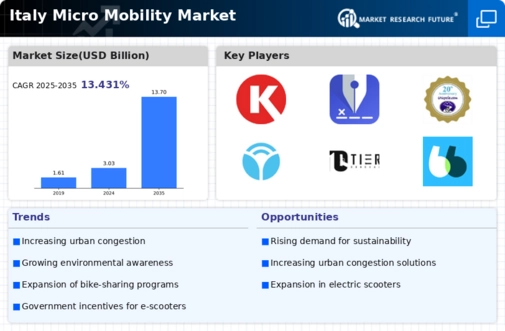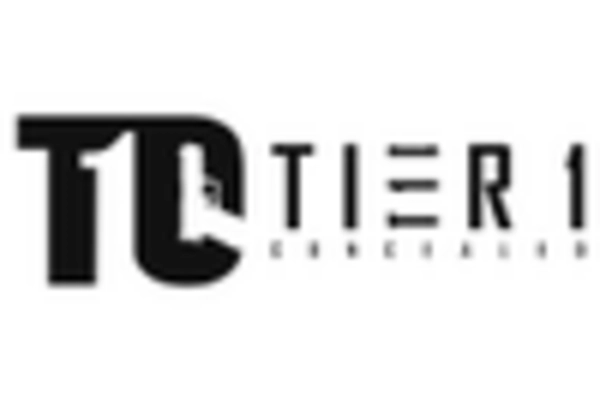Government Initiatives and Policies
Government initiatives in Italy are significantly influencing the micro mobility market. Policies aimed at reducing carbon emissions and promoting sustainable transport are being implemented at various levels. For instance, the Italian government has introduced incentives for electric vehicle usage, which extends to micro mobility solutions. The allocation of funds for infrastructure development, such as dedicated bike lanes and charging stations, is also noteworthy. Recent reports suggest that investments in micro mobility infrastructure could reach €500 million by 2026, indicating a strong commitment to enhancing this sector. Such supportive measures are likely to foster growth in the micro mobility market.
Urbanization and Population Density
The increasing urbanization in Italy is a pivotal driver for the micro mobility market. As cities expand and population density rises, traditional transportation systems face congestion challenges. In urban areas, the demand for efficient, flexible, and eco-friendly transport solutions is surging. The micro mobility market appears well-positioned to address these needs, offering alternatives such as e-scooters and bicycles. According to recent data, urban areas in Italy have seen a growth in micro mobility usage by approximately 30% over the past year. This trend indicates a shift in consumer preferences towards more sustainable transport options, which could further stimulate market growth.
Integration with Public Transport Systems
The integration of micro mobility solutions with public transport systems is emerging as a crucial driver for the market in Italy. As cities strive to create seamless transportation networks, micro mobility options are increasingly being incorporated into public transit strategies. This integration facilitates last-mile connectivity, making it easier for commuters to access public transport hubs. Recent studies suggest that cities implementing such integrations have experienced a 20% increase in micro mobility usage. This trend indicates a growing recognition of the role that micro mobility can play in enhancing overall urban mobility, thereby supporting the expansion of the micro mobility market.
Environmental Awareness and Consumer Preferences
Growing environmental awareness among consumers is driving the micro mobility market in Italy. As individuals become more conscious of their carbon footprints, there is a noticeable shift towards sustainable transportation options. The micro mobility market benefits from this trend, as e-scooters and bicycles are perceived as greener alternatives to traditional vehicles. Surveys indicate that approximately 60% of urban residents in Italy prefer using micro mobility solutions for short trips, reflecting a change in consumer behavior. This heightened awareness is likely to propel market growth, as more individuals opt for eco-friendly transport methods.
Technological Advancements in Mobility Solutions
Technological advancements are reshaping the micro mobility market in Italy. Innovations in battery technology, GPS tracking, and mobile applications are enhancing user experience and operational efficiency. The integration of smart technology into micro mobility vehicles allows for real-time data sharing and improved safety features. For instance, the introduction of app-based rental services has simplified access to e-scooters and bikes, making them more appealing to consumers. As technology continues to evolve, it is expected that the micro mobility market will expand, with projections indicating a potential market size increase of 25% by 2027.

















Leave a Comment